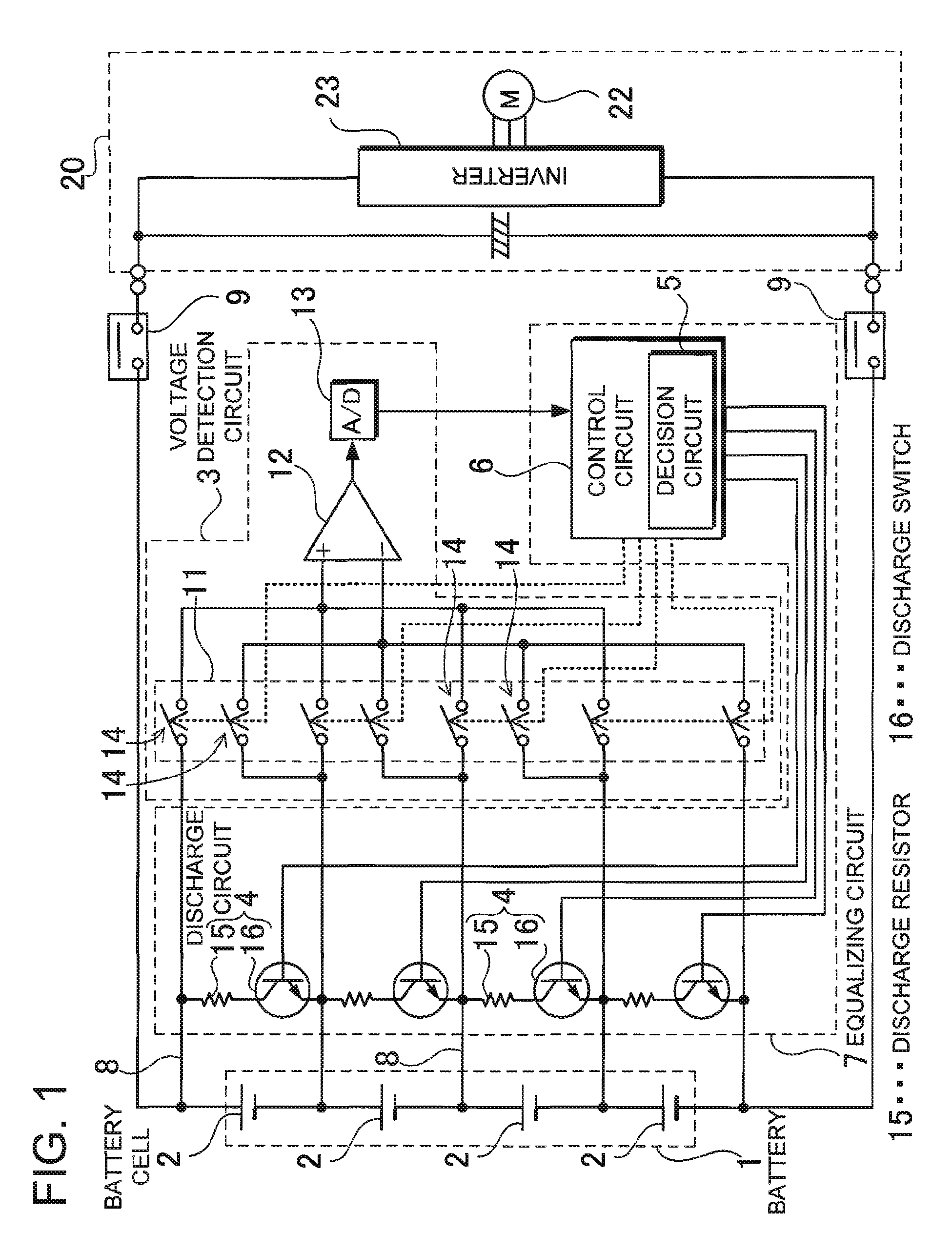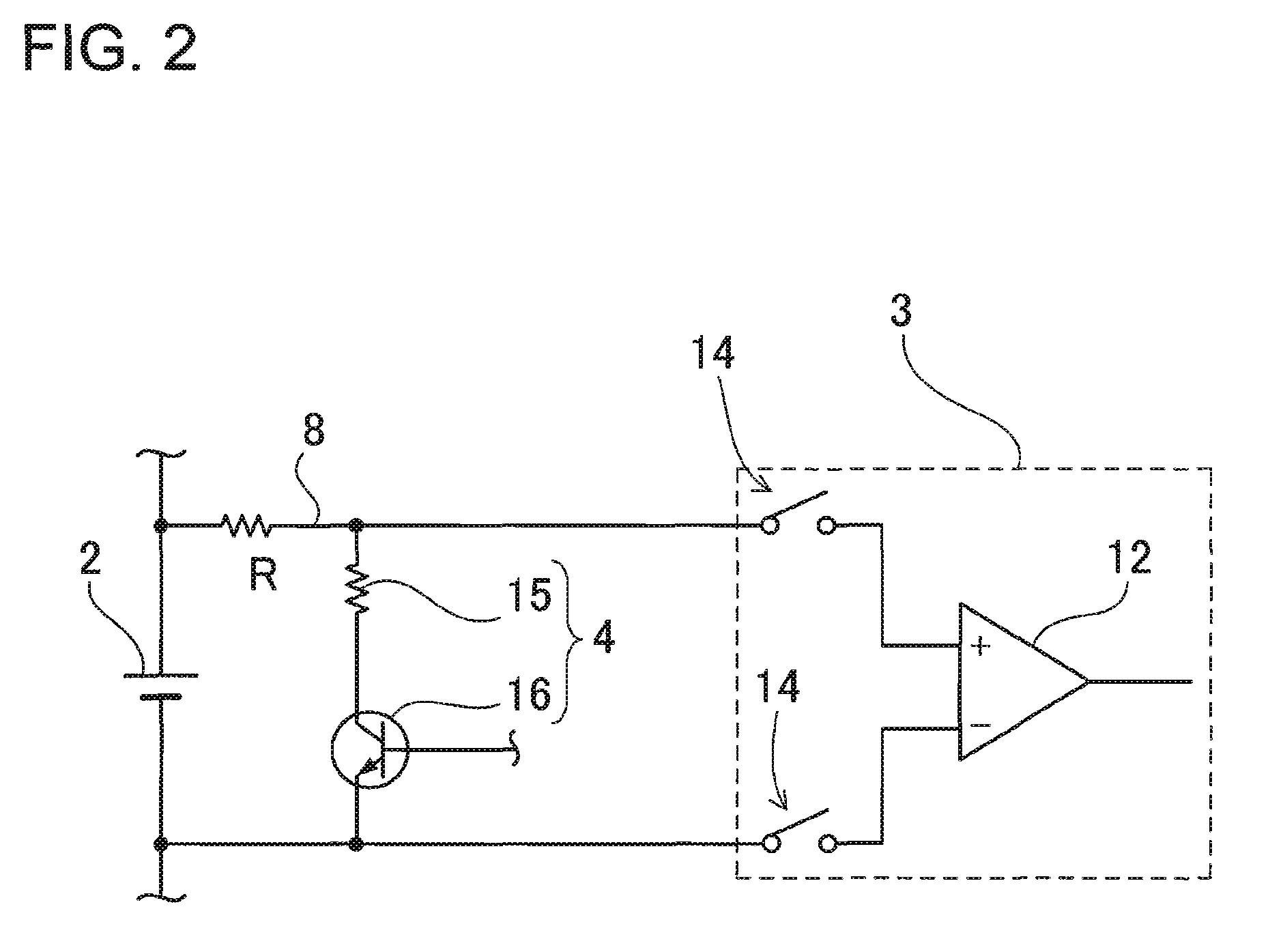Battery system with practical voltage detection
a battery system and voltage detection technology, applied in the field of battery systems, can solve the problems of significant degradation of over-charged or over-discharged battery cells, inability to maintain the voltage and remaining capacity of all battery cells, and over-charging or over-discharging of certain battery cells, so as to accurately measure the voltage of the battery cell.
- Summary
- Abstract
- Description
- Claims
- Application Information
AI Technical Summary
Benefits of technology
Problems solved by technology
Method used
Image
Examples
Embodiment Construction
)
[0017]The discharge circuits 4 of the battery system can form an equalizing circuit 7 that corrects voltage imbalance in the series-connected battery cells 2. In this battery system, since the equalizing circuit is used to determine whether or not battery cell voltage is correctly input to the voltage detection circuit, it is unnecessary to provide a special-purpose discharging circuit just to measure battery cell discharge voltage. Consequently, abnormal connection between a battery cell and the voltage detection circuit can be detected with a simple circuit structure.
[0018]Each discharge circuit 4 of the battery system can be provided with a series-connected discharge resistor 15 and discharge switch 16.
[0019]The decision circuit 5 of the battery system can control the discharge switches 16 of the discharge circuits 4 to detect battery cell 2 discharge voltage. In this battery system, since the discharge switches are controlled by the decision circuit, whether or not the voltage ...
PUM
 Login to View More
Login to View More Abstract
Description
Claims
Application Information
 Login to View More
Login to View More - R&D
- Intellectual Property
- Life Sciences
- Materials
- Tech Scout
- Unparalleled Data Quality
- Higher Quality Content
- 60% Fewer Hallucinations
Browse by: Latest US Patents, China's latest patents, Technical Efficacy Thesaurus, Application Domain, Technology Topic, Popular Technical Reports.
© 2025 PatSnap. All rights reserved.Legal|Privacy policy|Modern Slavery Act Transparency Statement|Sitemap|About US| Contact US: help@patsnap.com



